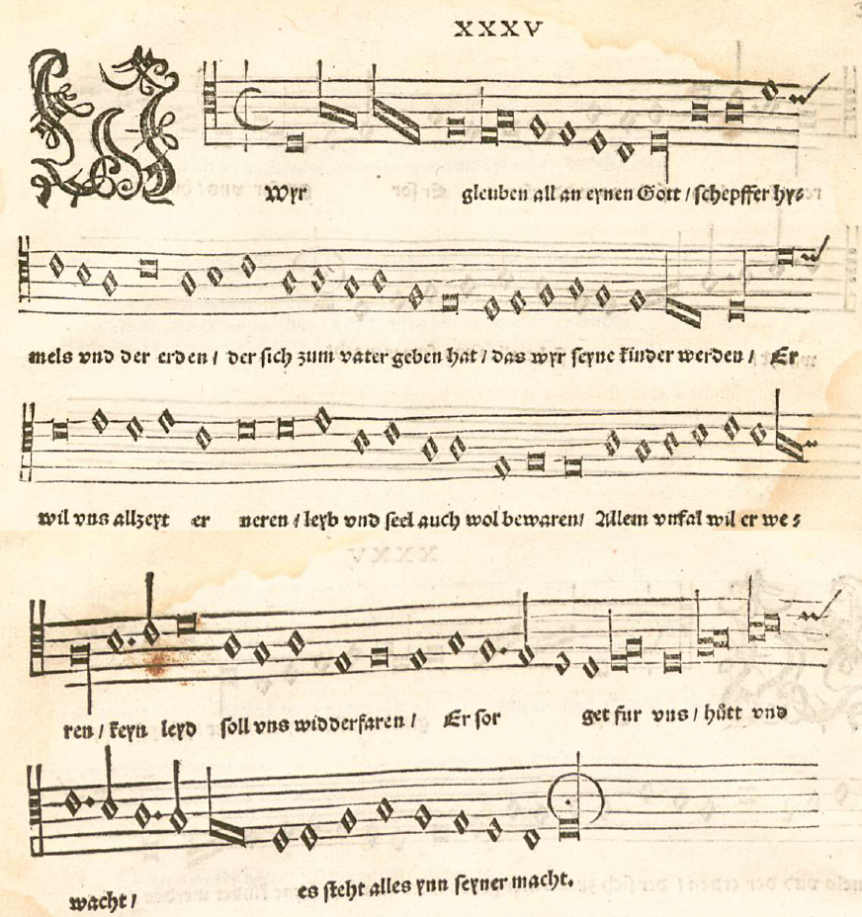In Holy Communion the creed is optional, and we omit the creed from time to time.
“The creed is not found in the earliest known liturgies.” [Luther D. Reed, The Lutheran Liturgy, 1946, p. 302]
In early Christian worship the creed was not used in Holy Communion, and did not enter the Roman rite (a predecessor of our liturgy) until the eleventh century. The principal proclamation of faith in the liturgy had been the Eucharistic prayer (the “Great Thanksgiving” or “Thanksgiving at the Table” said by the presiding minister at the altar). That understanding of the Eucharistic prayer as praise and proclamation eroded over the centuries, and some felt the need to add a creedal statement into Holy Communion, not sensing that it might be redundant.
Lutheran Book of Worship [LBW] (1978) worked to recapture understandings of the liturgy that had been lost as early as the Middle Ages. LBW restored the Eucharistic prayer (Great Thanksgiving) and made the creed optional. Evangelical Lutheran Worship [ELW] (2006) followed suit. The creed is not a principal pillar on which the liturgy rests, but may be used as one form of praise and proclamation.
Creeds grew up around baptism and instruction for baptism as a way to articulate the faith into which people were baptized. They were originally composed locally, and were used in worship in conjunction with baptism, starting by the second century. A creed became centralized and standardized in the fourth and fifth centuries (325-451), but was not initially added to the liturgy. The creed was introduced into Holy Communion in 471 at Antioch (present-day central Turkey), in 511 at Constantinople (Istanbul), and slowly spread from there. By the late sixth century the practice had reached Spain. Shortly after 800 Charlemagne added the creed to Holy Communion in the Frankish empire (including present-day France and part of Germany). In the year 1014, a German king was to be crowned emperor, and he requested that the creed be added to Holy Communion at Rome, and thus it was finally added to the Roman rite. Note that in much of Western Europe, the creed was added for political reasons, not for liturgical ones.
“The principal creedal declaration in the liturgy is the eucharistic prayer.” [Philip Pfatteicher, Commentary on the Lutheran Book of Worship, 1990, p. 145] The Eucharistic prayer (Great Thanksgiving) is always in Trinitarian form and proclaims salvation history as a form of praise. That is also the function of the creed when used, but note that even without the creed present, the Great Thanksgiving is still there to proclaim the joyful news.
Holy Communion is intended to be primarily praise, which includes proclamations of joy. It is not primarily about teaching (even though teaching may certainly occur). A creed in Holy Communion needs to be heard as a proclamation of joy in the context of praise. Too often, it is easier to hear the creed as an overly cerebral loyalty oath and checklist of teachings, devoid of any praise or joy. It may be beneficial occasionally to try the older practice of singing the creed, just as we sing the Gloria written around the fourth century, in order to hear the creed more as praise and joyful proclamation.
By the omission of the creed from time to time, we are not abandoning it (just as we do not abandon the joyful “alleluia” when we omit it during Lent). We hope, however, to support the understanding that the creed is not essential to Holy Communion, that the Eucharistic prayer serves as a joyful creedal proclamation, and that the creed, when used, should be another element of praise within the service.

